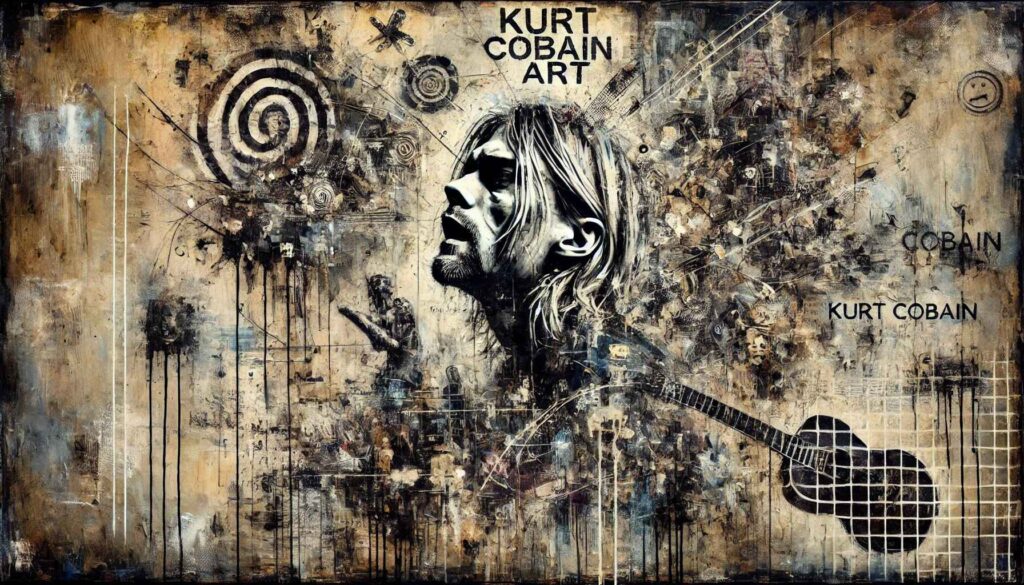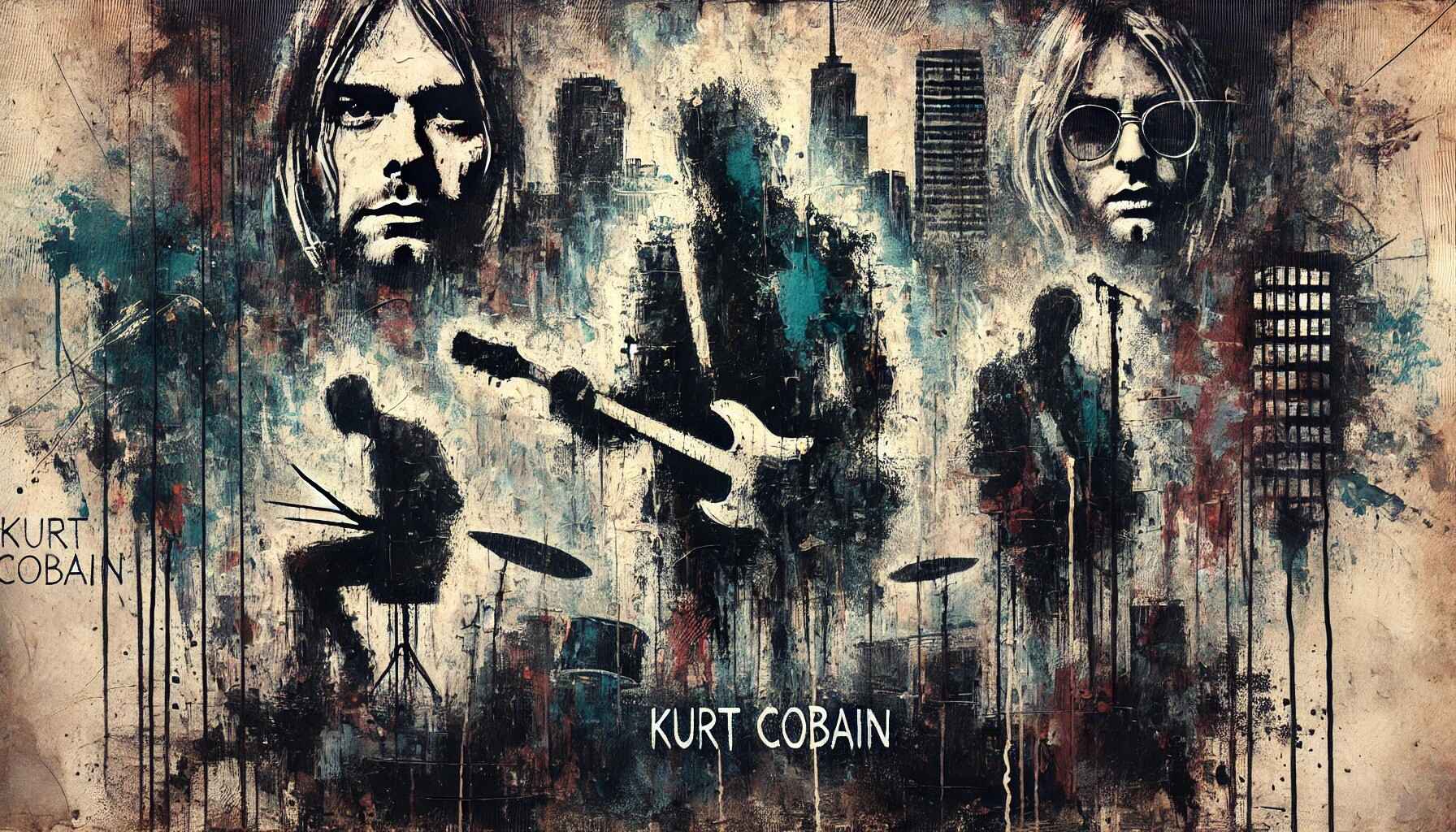Why Kurt Cobain Art is still inspiring a new generation? Kurt Cobain is widely celebrated for his groundbreaking music as the frontman of Nirvana, but his artistic legacy extends far beyond the iconic Nevermind album. Cobain’s original artwork reveals a raw, emotional insight into his troubled mind, offering a visual counterpart to his revolutionary sound. While his music continues to shape the world of rock, his art for sale, paintings, drawings, and even the controversial themes in his artwork have generated fascination among collectors and fans alike.
This blog post delves into Kurt Cobain’s art, shedding light on his creative process, the recurring motifs, the controversies surrounding his works, and how his art has contributed to his lasting cultural legacy.
| Name | Kurt Cobain |
|---|---|
| Born | February 20, 1967 |
| Died | April 5, 1994 |
| Famous As | Lead singer and guitarist of Nirvana, musician, artist |
| Notable Works | Nevermind, In Utero, Kurt Cobain: Montage of Heck |
| Artistic Style | Expressionism, Outsider Art, Surrealism |
Introduction of Kurt Cobain Art
While Kurt will forever be known as the leader of Nirvana, his original artwork reveals another side of his creative genius. His art includes a variety of media, ranging from pencil sketches to more complex mixed-media pieces. These artworks not only show Cobain’s emotional state but also serve as a visual diary of his personal struggles, fears, and cultural observations.
Cobain’s art style is often described as raw, unrefined, and expressive—qualities that align closely with the ethos of the grunge movement. His work embodies a chaotic, yet poignant commentary on the world, often exploring themes of alienation, identity, and the absurdity of fame.
Themes
Cobain’s artwork consistently touched on personal and cultural themes. His use of dark humor, stark imagery, and troubling figures highlights his deeply conflicted nature. Cobain’s art is often interpreted as a visual extension of the existential themes found in his music.
Marionettes and the Loss of Control
One of the most iconic symbols in Cobain’s paintings is the use of marionettes. These puppet-like figures often appear in his work, depicted in vulnerable, disconnected states. The marionette imagery can be seen as a metaphor for Cobain’s own feelings of being controlled—both by the expectations of fame and his personal demons.
This motif is often interpreted as a symbol of isolation and the loss of autonomy. Cobain’s constant struggle with his identity, fame, and inner turmoil is reflected through the manipulation of these figures.
Bodily Imagery and Blood
Cobain’s controversial use of bodily fluids, specifically blood, in his paintings has been a subject of fascination and debate. The idea that Cobain used his own blood to create art is supported by rumors circulating within the art community. While some claim that Cobain’s paintings do, in fact, contain blood, it remains a point of contention. Many believe that this technique symbolizes his emotional pain and intense self-expression. These artworks, often dark and grotesque, are an embodiment of the raw and visceral emotion Cobain felt in his personal life.
The Kurt Cobain Art Style
Cobain’s art style is best described as a blend of expressionism and outsider art, with elements of surrealism. Critics have noted the influence of famous painters such as Francis Bacon, whose haunting, distorted figures are similar to Cobain’s own depictions of human form.
His use of non-traditional techniques, from simple pencil sketches to layered mixed media collages, contributes to the sense of urgency and rawness that is evident in all of his works. Cobain’s art style defies the polished techniques of mainstream artists, instead opting for a more primal approach that feels immediate and unfiltered.
- Expressionist Aesthetic: His distorted figures and use of heavy lines evoke emotional intensity, reminiscent of expressionist art.
- Naïve and Outsider Elements: Many of his sketches can be classified as outsider art, with their unrefined style and intense emotional rawness.
Kurt Cobain Art for Sale
Given Cobain’s cultural influence and the significance of his visual works, it’s no surprise that there’s a growing market for kurt cobain art for sale. His original pieces often fetch large sums at auctions, reflecting not just his fame as a musician but also the lasting impact of his visual art.
Auction Sales and Provenance
Several pieces of Cobain’s original artwork have been sold at high-profile auctions, with prices reaching upwards of USD 280,000 for particularly significant pieces. These auction results show the high demand for Cobain’s works among collectors and art enthusiasts.
Some of the most sought-after pieces include his marionette paintings, as well as his more controversial works involving bodily fluids and grotesque imagery. The provenance of these pieces, which often comes with a direct connection to Cobain or his close circle, adds to their value.
| Artwork Title | Auction Price (USD) | Year Sold | Medium |
|---|---|---|---|
| Marionette Drawing | $280,000 | 2019 | Pencil on Paper |
| Self-Portrait | $150,000 | 2020 | Mixed Media Collage |
| Untitled Blood Work | $120,000 | 2018 | Paint and Blood |
Reproductions and Commercial Success
Cobain’s art prints have become widely available for purchase, ensuring that his art reaches a broad audience. Prints, posters, and other reproductions of his work are sold through various online platforms, such as Fine Art America and Redbubble. These commercial reproductions allow fans to own a piece of Cobain’s creative legacy at a more accessible price point.
Fan Art and Tribute Works
Cobain’s fanart has flourished in the decades following his death. Fans continue to create personal interpretations of his work, from digital portraits to sketches. These reinterpretations not only honor his legacy but also contribute to his ever-growing influence in pop culture.
Platforms like DeviantArt, Pinterest, and TikTok are filled with fan creations inspired by Cobain’s visual style. Whether it’s through the use of marionette imagery or blood-themed works, Cobain’s art continues to inspire a new generation of artists.
Kurt Cobain Art Books and Documentaries

Several publications and documentaries have explored kurt cobain art, helping to shed light on his creative process and personal struggles. The Cobain Art Book, for instance, compiles many of his sketches, paintings, and other visual works, offering a deeper understanding of the man behind Nirvana’s music.
The documentary Kurt Cobain: Montage of Heck provides a compelling look at Cobain’s life, featuring clips of his visual art, personal journals, and interviews with those who knew him best. These works allow us to explore the intersection of his music, writing, and visual art in a way that deepens our appreciation of his multifaceted legacy.
The Legacy of =Cobain’s Art
Cobain’s visual art has undoubtedly become an important part of his legacy. His paintings and drawings are more than just visual artifacts—they represent the emotional complexity of a man who, despite his fame, struggled with the pressures of life, fame, and personal demons.
Cultural Impact
From the marionette figures to the controversial use of bodily fluids, Cobain’s art provides a visual language to express his inner turmoil. His works challenge traditional notions of beauty and art, much like his music did in the early 1990s. Today, his art for sale, art prints, and fan interpretations continue to keep his legacy alive.
Enduring Influence
Cobain’s influence on both music and art continues to be felt. His unique blend of punk rock and visual creativity paved the way for future generations of artists who embrace raw, unfiltered emotional expression. Whether through auctions or modern fan art, Cobain’s artwork continues to captivate and inspire.
Conclusion
Kurt Cobain Art provides a window into his complex personality and troubled soul. His art offers more than just aesthetic value; it serves as a profound commentary on his personal struggles and the world around him. From his iconic marionette figures to his rumored use of blood in his paintings, Cobain’s artwork remains as enigmatic and powerful as the music he left behind. As we continue to explore and celebrate his art, it’s clear that Cobain’s legacy lives on—not only in his music but also in the striking, raw imagery he created.














